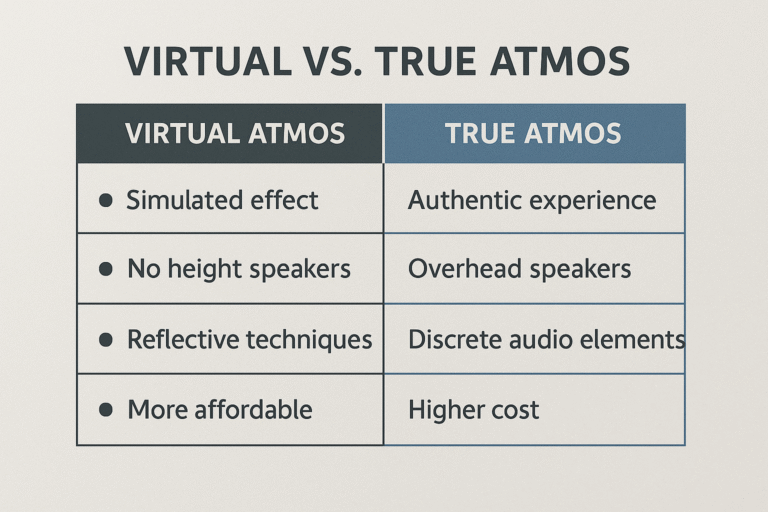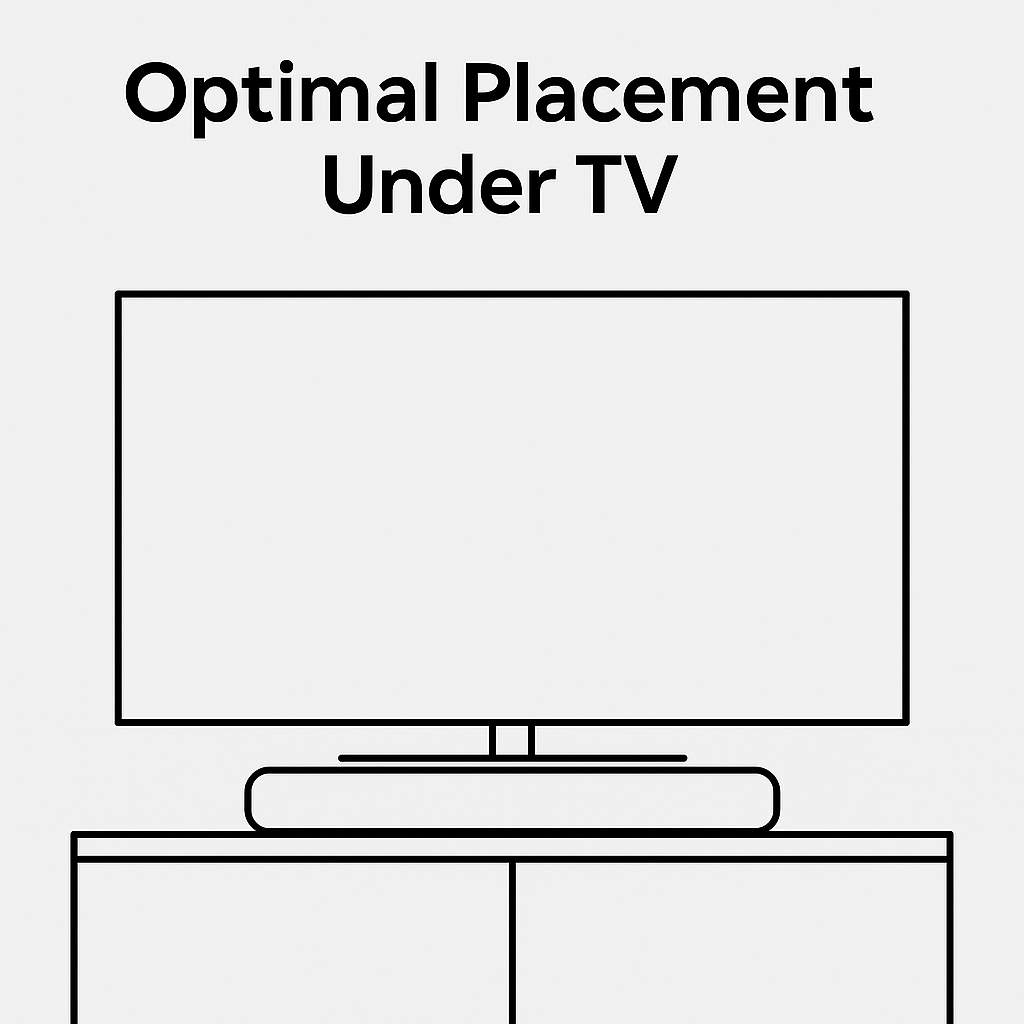With Dolby Atmos rapidly becoming the industry standard for home theater sound, manufacturers have responded with innovative solutions like virtual Atmos soundbars — devices that simulate height and surround channels without needing physical overhead speakers.
But how effective are these systems really? And are they worth it in 2025?
This article explores the pros and cons, ideal use cases, and top-performing models you can trust.
What is Virtual Dolby Atmos?
Virtual Dolby Atmos uses advanced digital signal processing (DSP) to bounce sound off walls and ceilings to simulate 3D spatial audio. Instead of physical up-firing speakers or in-ceiling units, the soundbar’s drivers and processor create a sense of vertical height and directional immersion.

How It Compares to True Atmos
| Feature | Virtual Atmos | True Atmos |
|---|---|---|
| Height Speakers | Simulated via DSP | Physical up-firing or ceiling-mounted |
| Room Dependency | Very sensitive to room shape | More consistent across environments |
| Setup Simplicity | Plug-and-play | Requires precise placement/setup |
| Cost | Lower | Higher |
| Sound Quality | Moderate spatial realism | Superior depth and precision |
Virtual Atmos can’t replicate the full overhead channel experience of true Atmos, but for casual users or apartment dwellers, it’s a big upgrade over standard stereo or 5.1 setups.

Best Virtual Atmos Soundbars in 2025
Here are standout models that offer the best virtual Atmos experience under $600:
1. Sonos Beam Gen 2
Compact, stylish, and integrates easily with Alexa and Google Assistant
Supports Dolby Atmos through virtual processing
Controlled via Sonos app or voice
2. Bose Smart Soundbar 600
Balanced sound profile with decent spatial cues
Supports Dolby Atmos and Alexa/Google Assistant
Optional rear speaker and subwoofer expansions
3. Samsung HW-Q600C
Dolby Atmos and DTS:X support
Includes wireless subwoofer
Great value for medium-sized living rooms

Who Should Use Virtual Atmos?
Best For:
Apartment dwellers with limited speaker placement options
Users wanting an immersive upgrade without breaking the bank
Families or individuals who stream content (Netflix, Prime Video)
Not Ideal For:
Audiophiles demanding precision height effects
Users with large open floor plans
Dedicated home theaters with AVR + speaker setups
Tips for Getting the Best Virtual Atmos Experience
Room Shape Matters: Choose rooms with flat ceilings and fewer open sides.
Position Correctly: Mount or place the soundbar level with your TV — not inside a cabinet.
Run Calibration: Use the companion app (Sonos, Bose, Samsung) to calibrate acoustics.
Pair With Subwoofer: Enhance bass depth to support spatial clarity.

Should You Upgrade to Real Atmos?
Virtual Atmos offers a big leap over stereo sound, but if you:
Have a large living room
Frequently host movie nights
Own an AVR or plan to invest in one
… then stepping up to a true Atmos system will pay off in immersion and clarity.
Conclusion: Are Virtual Atmos Soundbars Worth It?
Yes — for most casual users, they strike a balance between cost, ease, and immersion. They’re perfect for renters, small homes, or anyone looking for Dolby Atmos without the complexity of a multi-speaker setup.
For under $600, soundbars like the Sonos Beam Gen 2 or Samsung Q600C deliver an impressive approximation of immersive audio, while doubling as Alexa or Google voice assistants.